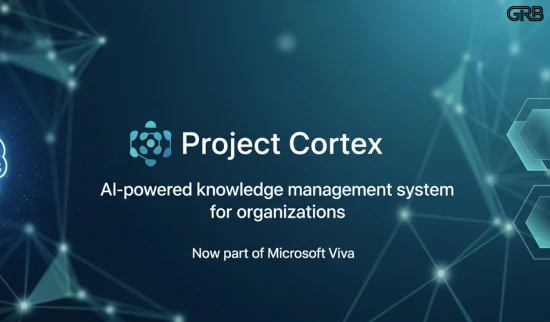Summury: Project Cortex, now integrated into the Microsoft Viva platform, represents a strategic initiative to revolutionize enterprise knowledge management through artificial intelligence. The system automatically ingests and analyzes an organization’s unstructured data from across the Microsoft 365 ecosystem, identifying key topics, projects, and subject matter experts. By proactively surfacing this contextual information through integrated features like Topic Cards and Pages, Project Cortex transforms disconnected data into a dynamic and accessible knowledge network. This approach enhances productivity by enabling employees to discover information and find experts seamlessly within their daily workflow, thereby reducing redundant work and preserving critical institutional knowledge.
Project Cortex, which has now evolved into parts of the Microsoft Viva suite (specifically Viva Topics), is basically an AI-powered knowledge management system for your organization. Think of it as a super-smart librarian that automatically reads, organizes, and understands all the information your company produces. Instead of you having to search for information, the information finds you.
How the AI ‘Magic’ Works 🪄
So, how does it actually do this? It’s a three-step process that happens behind the scenes.
- Content Ingestion: First, the AI connects to your company’s Microsoft 365 environment. It starts “reading” everything it has permission to see: documents in SharePoint, emails in Outlook, conversations in Teams, and more. It’s like giving a speed-reader access to your entire digital library.
- AI Analysis & Organization: This is where the core AI work happens. The system doesn’t just index words; it uses natural language processing to understand the meaning and context.
- Topic Recognition: The AI identifies recurring themes, projects, and terms that are important to your business. For example, it might recognize “Project Titan” or “Q4 Sales Strategy” as specific “topics.”
- Entity Extraction: It pulls out key details like people, dates, and locations associated with these topics.
- Relationship Mapping: Crucially, it connects the dots. It understands that a certain group of people are the main experts on “Project Titan,” that specific documents are the official plans, and that it’s related to the “Q4 Sales Strategy.”
- Knowledge Surfacing: The final step is bringing this organized knowledge to you, right where you’re working. This happens primarily through two features:
- Topic Cards: When you’re in an app like Outlook or Teams and you hover over a recognized topic (like “Project Titan”), a small pop-up card appears. This card gives you a quick summary, lists the key people involved, and provides links to important documents.
- Topic Pages: If you click on the topic card, you’re taken to a full “Topic Page.” Think of this as an automatically generated Wikipedia page for that specific internal topic. It compiles all the definitions, people, documents, and related conversations into one place, curated and kept up-to-date by the AI.
Why It’s a Game-Changer
Before Project Cortex, finding information often meant digging through old emails, searching confusing folder structures, or asking colleagues who might (or might not) know the answer. This old way is slow and inefficient.
Cortex flips the script. It tackles a few key problems:
- “Tacit Knowledge” Loss: A lot of company knowledge lives only in employees’ heads. When someone leaves, that knowledge often goes with them. Cortex helps capture and document this information automatically from their digital footprint.
- Reinventing the Wheel: How often has a team started a project, only to find out another team did something similar a year ago? Cortex surfaces that existing work, saving massive amounts of time and effort.
- Finding the Expert: Instead of sending a company-wide email asking, “Who knows about X?”, Cortex can instantly tell you who the key contributors are on that topic based on the documents they’ve authored and conversations they’ve had.
In short, Project Cortex uses AI to build a dynamic, self-updating knowledge network for your organization. It’s not just a smarter search bar; it’s a system that proactively delivers context and knowledge, making everyone more informed and efficient without them even having to ask.

